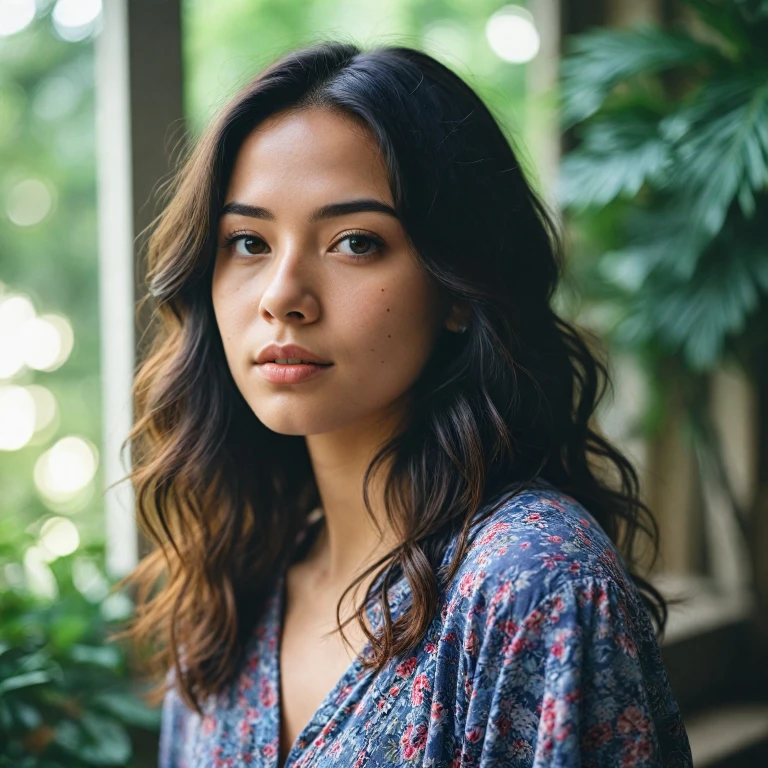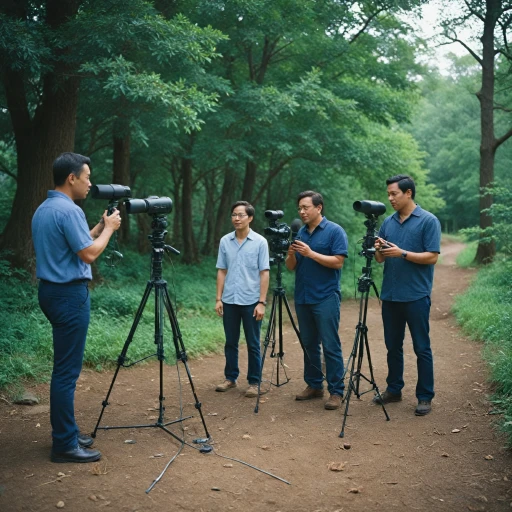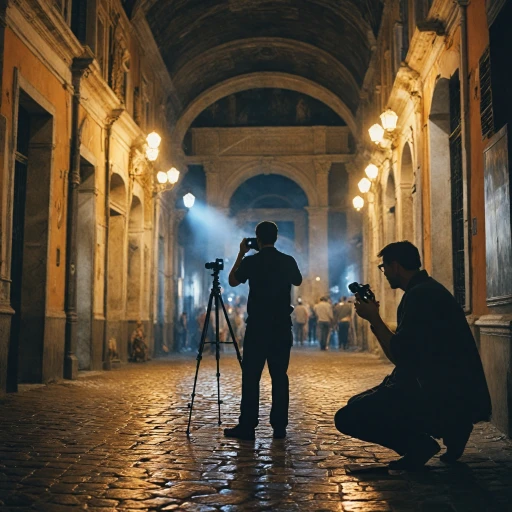
Understanding Portrait Photography
Grasping the Essence of Portrait Photography
Portrait photography is an art form that captures the personality and mood of an individual or group. It’s not just about taking a picture; it’s about telling a story through images. The right lens can make a significant difference in achieving stunning portraits, whether you're using a Canon EOS camera or any other brand. Understanding the fundamentals of portrait photography is essential before diving into the technical aspects of lenses.
When capturing portraits, the focus is often on the subject's face, making the choice of lens crucial. The focal length plays a vital role in how the subject is portrayed. A lens with a longer focal length can create a more flattering image by compressing features and reducing distortion. This is why many photographers prefer using a prime lens or a zoom lens with a suitable range for portrait photography.
Lighting is another critical component. Whether shooting in natural light or using studio setups, the ability to work in low light conditions can elevate the quality of your portraits. Lenses with a wide aperture allow more light to hit the camera sensor, which is particularly beneficial in dimly lit environments.
For those interested in exploring more about the technical aspects and gear recommendations, the perfect gear can also enhance your overall photography experience.
Key Features to Look for in a Portrait Lens
Essential Qualities in a Portrait Lens
When it comes to portrait photography, selecting the right lens can make a significant difference in the quality of your images. Understanding the key features to look for in a portrait lens will help you capture stunning portraits with your Canon camera.
Aperture and Low Light Performance
One of the most crucial aspects of a portrait lens is its aperture. A wide aperture, such as f/1.8 or f/1.4, allows more light to enter the lens, which is beneficial in low light conditions. This feature is particularly useful for creating a shallow depth of field, which helps in isolating the subject from the background, giving your portraits a professional look.
Focal Length Considerations
Focal length plays a vital role in how your portraits will appear. A lens with a focal length between 85mm and 135mm is often considered ideal for portrait photography. These focal lengths provide a flattering perspective and allow for a comfortable working distance between the photographer and the subject.
Prime vs. Zoom Lenses
Choosing between prime and zoom lenses can be challenging. Prime lenses, known for their fixed focal length, generally offer superior image quality and wider apertures, making them great for low light and achieving a beautiful bokeh effect. On the other hand, zoom lenses provide versatility, allowing you to adjust the focal length without changing lenses, which can be beneficial in dynamic shooting environments.
Image Quality and Build
High image quality is non-negotiable in portrait photography. Canon lenses, particularly those with USM (Ultrasonic Motor) technology, are renowned for their fast and quiet autofocus, which is essential for capturing sharp images. Additionally, considering lenses with robust build quality ensures durability and longevity, especially if you frequently shoot in various conditions.
Compatibility with Your Camera
Ensure that the lens you choose is compatible with your Canon camera model. Whether you're using a full-frame or mirrorless EOS camera, matching the lens to your camera system will optimize performance and image quality.
Top Canon Lenses for Portraits
Discovering the Best Canon Lenses for Portraits
Selecting the right lens for portrait photography is essential to capture stunning images. Canon offers a range of lenses tailored for this purpose, each with unique features that cater to different photography needs. Understanding your photography style will help you choose the ideal Canon lens to elevate your portrait game.- Canon EF 85mm f/1.8 USM: Known for its excellent sharpness and beautiful bokeh, this prime lens is perfect for portraits. Its wide aperture allows you to shoot in low light conditions while creating a dreamy background blur for focused images.
- Canon RF 50mm f/1.2L USM: For Canon's mirrorless cameras, this lens offers exceptional image quality and precision. It's a versatile prime lens that performs brilliantly in various lighting scenarios.
- Canon EF 70-200mm f/2.8L IS II USM: A favorite among professionals, this zoom lens offers flexibility in framing and is great for capturing portraits from a distance without compromising on the image quality.
- Canon EF 50mm f/1.4 USM: Ideal for those who love shooting close portraits with a natural perspective. This lens is both affordable and highly effective in low light, making it a staple in many photographers' kits.
- Canon RF 85mm f/1.2L USM DS: With its defocus smoothing coating, this lens creates beautifully soft highlights and a smooth bokeh effect, making it fantastic for capturing eye-catching portraits.
Comparing Prime vs. Zoom Lenses for Portraits
Deciphering Prime and Zoom Lenses for Portraits
When exploring the realm of portrait photography, a common question that pops up is whether to opt for a prime lens or a zoom lens. Both have their advantages and understanding these can help in making an informed decision.- Prime Lenses: Prime lenses are known for having a fixed focal length. This limitation is not necessarily a drawback, as it often translates to superior image quality and a wider maximum aperture. This means prime lenses excel in low light conditions, capturing stunning images even in challenging situations. Their ability to render sharp details while providing a beautiful, soft bokeh makes them an ideal choice for portrait photography. The Canon 50mm f/1.8, often referred to as the "nifty fifty," is a popular choice among photographers for its great performance and affordability.
- Zoom Lenses: On the other hand, zoom lenses provide versatility, allowing photographers to adjust their framing without changing positions. This flexibility is particularly useful in dynamic shooting environments. Although they traditionally have a smaller aperture compared to prime lenses, advancements in lens technology have greatly improved their low light capabilities. The Canon 24-70mm f/2.8 is a standout, offering a solid balance of quality and convenience, making it one of the best Canon options for professionals seeking versatility without compromising on image quality.
Tips for Using Canon Lenses in Portrait Photography
Getting the Most Out of Your Canon Lenses
Using a Canon lens for portrait photography involves more than just pointing and shooting. To capture the best images, it's essential to make the most of your equipment and this includes understanding how to effectively use different lens features.
Adjusting Aperture and Focal Length
The aperture plays a pivotal role in portrait photography. Using a wide aperture, such as f/1.8, allows for stunning bokeh—a background blur that brings the subject into sharp focus. This is especially beneficial when using full frame cameras. Remember to consider your lens's focal length, as longer focal lengths can accentuate this effect, helping to isolate your subject beautifully.
Utilizing Canon's Lens Technologies
Canon lenses, including the USM and STM models, offer advanced features such as ultrasonic motor (USM) and stepping motor (STM) for quick, silent focusing. This is crucial when working with subjects in natural settings or aiming for candid portraits. Recognizing when to switch between manual and autofocus modes can ensure sharp images regardless of the shooting conditions.
Operating in Low Light Conditions
Canon’s best lenses for portraits often excel in low light environments. Prime lenses, renowned for larger maximum apertures like f/1.4 or wider, capture more light, delivering exceptional quality even as the sun sets. For photographers using mirrorless cameras, the flexibility of using different ISO settings can further enhance image clarity.
Experimenting with Lens Types
Choosing between prime and zoom lenses depends on your style and needs. For flexibility, a zoom lens might be preferable, allowing varied compositions without needing to physically move. However, a prime lens frequently provides superior sharpness and depth, making it a favorite for many photographers.
Practicing and Continuously Learning
Finally, practice is key to mastering portrait photography. Regularly using your Canon lens helps you understand its strengths and limitations. Engaging with a community of photographers or attending workshops can also provide insights into capturing truly captivating portrait images.
Investing in Your Photography Gear
Long-Term Value in Quality Equipment
Investing in your photography gear, particularly Canon lenses, ensures you're equipped for success both now and in the future. A high-quality portrait lens such as those discussed in this guide not only enhances your current image quality but also serves as a long-term asset, whether you're using a Canon EOS mirrorless or a DSLR camera.- Durability and Longevity: Canon lenses are built to last. The superior construction often involves advanced materials which improve the longevity of the lens. This investment pays off over time as you achieve consistent, reliable performance with every shoot.
- Adaptability and Flexibility: A wide range of lenses, from wide-angle to zoom lenses, primes to macros, cater to various photographic needs. Investing in versatile lenses like a wide-open prime lens or a versatile zoom lens means you're prepared for any scenario, whether it's capturing stunning portraits in low-light conditions or seizing sharp images in well-lit settings.
- Continuous Improvement: Canon continually innovates, introducing new lens technologies that enhance light capture, image stabilization, and more. By investing in Canon's latest offerings, you benefit from these advancements, ensuring you remain at the forefront of photography techniques and equipment.











